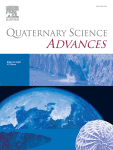
This study aims to delineate landslide susceptibility maps using an integrated approach of remote sensing, geographical information system (GIS), and Analytical Hierarchy Process (AHP) method, for Sikkim Himalaya, India. Multiple data as lithology, lineament density, geomorphology, slope, soil, rainfall, drainage density, and land use/land cover have been considered for delineating the landslide susceptibility maps. Spatially distributed maps/thematic layers of all the aforementioned parameters were created using remotely sensed as well as ground data in a GIS environment. These thematic layers were assigned suitable weights on the Saaty's scale according to their relative importance in landslide occurrence in the study area. The assigned weights of the thematic layers and their features were then normalized by using the AHP technique. Finally, all thematic layers were integrated by a weighted linear combination method in a GIS environment to generate landslide susceptibility maps. The delineated landslide susceptibility map in the study area was categorized as ‘Very Low (0.18%)’, ‘Low (63.34%)’, ‘Moderate (0.06%)’, ‘High (33.60%)’, and ‘Very High (2.76%)’, respectively. Area Under the Curve (AUC) curve shows the accuracy assessment of the study area based on AHP model and landslide inventory is 73%. The results of this study may be useful to identify the landslide susceptibility zones.